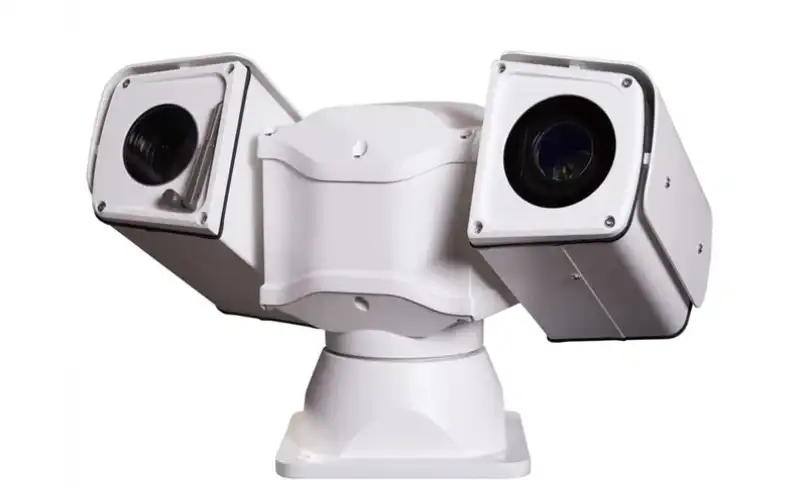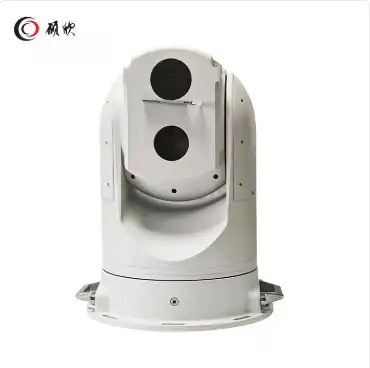وضع كاميرات الأمن Shuoxin في الأماكن الصحيحة مهم جدا للحفاظ على الأماكن آمنة. يمكن أن يترك وضع ضعيف ثقوب ، مما يترك المشكلة تنزلق دون ملاحظة. يبين هذا الدليل لماذا يهم تحديد الموقع ، وكيفية تخطيط الإعداد الذكي ، وطرق الحصول على أفضل ما يمكن شوكسين كاميرات الأمن. من اكتشاف المناطق الضعيفة إلى التعامل مع الإضاءة الصعبة ، سنشارك نصائح سهلة لبناء نظام قوي وموثوق به. مع وضع ذكي ، يمكنك حماية المحيطات الواسعة والبنية التحتية الحيوية والحدود البعيدة دون أن تفوت أي شيء. أنظمتنا مصممة لمراقبة طويلة المدىمن مئات الأمتار إلى عدة كيلومترات.
الموقع السيئ يمكن أن يضعف نظامك
الفجوات السماح المتسللين التسلل من خلال
يمكن أن تفوت كاميرات الأمن Shuoxin ذات الموقع السيئ المناطق الرئيسية. هذه الثغرات تسمح للناس الخاطئين أن يذهبوا غير مرئية. على سبيل المثال ، قد لا تلتقط كاميرا مرتفعة جدا فوق باب الوجوه الواضحة بسبب زاوية منحدرة. ارتفاعات أو زوايا خاطئة يمكن أن تجعل الفيديوهات غامضة أو تخطي لحظات مهمة. تخيل بوابة التسليم حيث توجه الكاميرا عالية جداً - قد تظهر السماء لكنها تفوت وجه شخص أو لوحة رقم السيارة. الموقع الجيد يحافظ على كل مكان حيوي، مثل الأبواب أو المسارات، في المنظر. هذا يساعد على الحفاظ على أمن ممتلكاتك.
الإعداد الذكي يزيد من التغطية ويوفر المساحة
التخطيط الدقيق يضمن كل كاميرا أمنية Shuoxin تغطي منطقة مختلفة. التداخل القليل مع الكاميرات الأخرى يملأ الثغرات. هذا يوفر النسخ الاحتياطي إذا فشلت الكاميرا أو تم حظرها ، مثل شجرة أو علامة. كما أنه يتجنب تصوير نفس المكان مرتين ، مما يوفر التخزين. الكاميرات الموضعة بشكل جيد تحرس المداخل والمسارات والبقع الضعيفة مثل السياج أو البوابات الجانبية بشكل جيد. على سبيل المثال ، فإن تعيين الكاميرات في نقاط منظور مختلفة مثل أبراج المراقبة وأعمدة المرور يخلق شبكة سلسة من التغطية عبر منطقة واسعة.
من أين تبدأ عند التخطيط لإعداد الكاميرا؟
ابحث عن المناطق المخاطرة أولاً
ابدأ بالتحقق من العقار الخاص بك عن نقاط الضعف. ابحث عن أماكن قد تتعرض فيها المشاكل، مثل البوابات الأمامية أو الأبواب الخلفية أو موانئ التحميل أو المساحات المفتوحة. هذه المناطق تجذب المتسللين أو المخربين. إعداد كاميرات الأمن Shuoxin في هذه الأماكن أولا يحافظ عليها آمنة. على سبيل المثال، يمكن للكاميرا في بوابة المستودع رؤية نشاط غريب، مثل المركبات الغريبة. ويمكن لشخص آخر على سياج حدودي أن يلتقط المتسلقين أو المتسلقين. التركيز على هذه المناطق عالية المخاطر يضمن أن نظامك يحمي أهم الأماكن. وهذا يجلب راحة البال وتغطية قوية.
فكر في تغييرات الإضاءة
الإضاءة عامل كبير لكاميرات الأمن. خلال النهار، يمكن لأضواء الشمس القوية أن تفسد العدسات، خاصة إذا كانت الكاميرات تواجه الشرق أو الغرب حيث تشروق الشمس أو تغرب. وهذا يمكن أن يضعف مقاطع الفيديو، وإخفاء التفاصيل مثل الوجوه أو العلامات. في الليل، تحتاج البقع المظلمة إلى كاميرات ذات رؤية ليلية جيدة. تجعل الأضواء أو الكاميرات التي تنشط بالحركة بالقرب من أضواء الشارع اللقطات أكثر وضوحاً بعد الظلام. على سبيل المثال ، يمكن لكاميرا مثبتة على عمود عالي ، مدمجة مع مصابيح الأشعة تحت الحمراء القوية ، تحديد النشاط على بعد أكثر من كيلومتر ، حتى في الظلام الكامل.
كم يجب تركيب كاميرات الأمن؟
الارتفاع الصحيح يحافظ على وجهات النظر واضحة وآمنة
ارتفاع الكاميرا يؤثر على ما يراه ومدى أمانه. كاميرات الأمن Shuoxin في الهواء الطلق تعمل بشكل أفضل في ارتفاع 8 إلى 10 أقدام. هذا يبقيهم بعيدين عن الوصول من المخربين ولكن منخفض بما فيه الكفاية للقبض على الوجوه الواضحة أو لوحات الترخيص. على سبيل المثال ، يمكن للكاميرا على ارتفاع 9 أقدام فوق بوابة تسجيل وجه شخص أو تفاصيل سيارة دون أن يتم العبث بها. مرتفعة جداً، وقد تفوت الزاوية تفاصيل مهمة. منخفض جداً، ويمكن لشخص ما أن يضرره. اختيار الارتفاع الصحيح يضمن مقاطع الفيديو الواضحة ويحافظ على أمان الكاميرات.
ضبط الزوايا لتغطية أفضل
الارتفاع ليس كل شيء. ميل الكاميرا مهم بنفس القدر. قد تفوت الزاوية الحادة للأسفل الوجوه أو الإجراءات ، مثل شخص ما يتسلل عبر سياج. كاميرات Shuoxin PTZ (pan-tilt-zoom) تسمح لك بتعديل الزوايا عن بعد. يمكنك تغيير المنظر لتغطية ما يهم، مثل الممر أو المدخل الجانبي. على سبيل المثال، فإن إمالة الكاميرا قليلاً للتركيز على نقطة دخول البوابة تضمن التقاط كل تفاصيل، من الملابس إلى لوحات السيارات. هذا يجعل نظامك أقوى.

ما هي أفضل طريقة لتجنب البقع العمياء الشائعة؟
تداخل المشاهدات لوقف الفجوات
استخدام كاميرات أمن Shuoxin متعددة مع مناظر متداخلة يمنع البقع العمياء. إذا تم حظر كاميرا واحدة - على سبيل المثال ، بواسطة شاحنة موقفة - تلتقط كاميرا أخرى المشهد. على سبيل المثال، فإن تداخل مجالات الرؤية من الكاميرات على أبراج المراقبة المجاورة أو أسطح المركبات يزيل أي أرض ميتة بينها، مما يضمن تتبع مستمر للأهداف عبر التضاريس المفتوحة. هذا الإعداد يوفر النسخ الاحتياطي ويحافظ على أمن ممتلكاتك. تتبع المناظر المتداخلة أيضًا الحركة عبر مناطق كبيرة ، مثل سياج طويل أو مدخل واسع. هذا يضمن عدم انزلاق المتسلل دون ملاحظة.
راقب الزوايا والجدران عن كثب
يمكن أن تخفي الزوايا والحواف من الجدران أو السياجات المناطق الميتة حيث تفقد الكاميرات البصر. هذه البقع صعبة بسبب الزوايا الضيقة أو العقبات مثل الأعمدة. كاميرات الأمن Shuoxin على غرار القبة مع عدسات واسعة تعمل بشكل رائع هنا. فهي توفر وجهات نظر أوسع، وتقليل المناطق المفقودة. على سبيل المثال، يمكن أن تغطي كاميرا القبة في زاوية المبنى جانبي الجدار. يلتقط أي شخص يحاول الاختباء. العدسات الواسعة تسمح لك برؤية المزيد من الممتلكات. هذا يجعل من الصعب على صانعي المشاكل العثور على بقع غير محمية.
كيف يمكنك تحسين الرؤية في المناطق ذات الضوء المنخفض؟
استخدام كاميرات الأشعة تحت الحمراء للبقع المظلمة
في المناطق المظلمة ، مثل الزوايا المظلمة أو الحدود الخارجية ، تعمل كاميرات الأمن تحت الحمراء (IR) Shuoxin بشكل جيد. يستخدمون مصابيح LED الأشعة تحت الحمراء لإضاءة المشاهد المظلمة جدا للعيون البشرية. هذا ينتج فيديوهات واضحة باللونين الأسود والأبيض ، مثالية لمناطق الضوء المنخفض. على سبيل المثال، يمكن لكاميرا الأشعة تحت الحمراء في مدخل زقاق مظلم التقاط وجه المهاجم أو تفاصيل السيارة في الليل. هذه الكاميرات تضمن أن نظامك يعمل في مناطق غامضة. يحافظون على أمن ممتلكاتك على مدار الساعة.
وضع الكاميرات بالقرب من الأضواء
إذا لم يكن لديك كاميرات الأشعة تحت الحمراء ، ضع كاميرات الأمن Shuoxin بالقرب من الأضواء الخارجية ، مثل مصابيح الشارع أو مصابيح الفيضانات. هذا يجعل الفيديوهات الليلية أكثر وضوحا. يظهر التباين الأفضل التفاصيل بشكل حاد ، حتى في الظلام.
ثابت vs. كاميرات PTZ تناسب احتياجات مختلفة
كاميرات الأمن الثابتة Shuoxin مثالية للمناطق الثابتة، مثل البوابات أو الممرات. تبقى مقفلة على منطقة واحدة، مما يضمن تغطية مستمرة. نماذج PTZ ، والتي تمتد ، تميل ، وتزوم ، رائعة للمساحات الكبيرة التي تحتاج إلى مناظر مرنة ، مثل الكتل الكبيرة أو الحدود المفتوحة. على سبيل المثال، يمكن للكاميرا الثابتة أن تحرس بوابة دخول محددة. يمكن لكاميرا PTZ عالية الأداء مسح مسار محدد مسبقاً بشكل مستقل عبر نصف قطره 10 كيلومترات ، وتقفل وتتبع حركة المركبات أو الموظفين بدقة دقيقة. كل نوع يناسب احتياجات مختلفة. الاختيار الصحيح يعتمد على تخطيط العقار الخاص بك.
عدسات واسعة مقابل التركيز عن قرب
كاميرات الأمن Shuoxin استخدمت مزيجًا استراتيجيًا من الكاميرات: نماذج مراقبة واسعة المنطقة لمراقبة مساحات كبيرة من الأراضي من المواقع المرتفعة ، وكاميرات PTZ ذات التركيز الطويل جداً للتقريب وتحديد تفاصيل الاهتمام من أميال بعيدة. العدسة الضيقة يمكن أن تركز على البوابة. هذا يضمن لك أن ترى كل من الصورة الكبيرة والتفاصيل الصغيرة.
النظم المركزية عرض جميع التغذية معًا
تستخدم الإعدادات الحديثة مسجلات الفيديو الشبكية (NVRs) أو مسجلات الفيديو الرقمية (DVRs). هذه تظهر جميع تغذيات كاميرا الأمن Shuoxin على شاشة واحدة. يمكنك مشاهدة مناطق متعددة - مثل البوابات أو الممرات أو الحدود - في وقت واحد. على سبيل المثال، يمكن لـ NVR عرض لقطات من مدخل مخزن ومجموعة خلفية معاً. وهذا يجعل المراقبة بسيطة. يضمن لك عدم تفويت أي إجراء عبر ممتلكاتك.
الأسئلة الشائعة
Q1: هل يمكنني إعداد نظام كاميرا الأمن Shuoxin الخاص بي؟
ج: نعم، ولكن تعلم الأساسيات أولا. تحقق من ارتفاع التثبيت وزوايا الرؤية واحتياجات الإضاءة. أيضًا ، راجع القواعد المحلية للكاميرات لتبقى قانونية.
س2: كم مرة يجب علي التحقق من إعداد الكاميرا؟
ج: تحقق من ذلك سنويا أو بعد التغييرات في عقارك. قد تخلق الهياكل أو الأشجار أو العلامات الجديدة بقع عمياء أو تؤثر على الإضاءة. اعمل التعديلات حسب الحاجة.
س3: هل أحتاج إلى كاميرات الأمن Shuoxin المتقدمة للاستخدام في الهواء الطلق؟
ج: ليس دائما. النماذج العادية تعمل بشكل جيد إذا وضعت بذكاء. استخدم نصائح مثل الارتفاع المناسب ، وتعديلات الزاوية ، والتخطيط للضوء للحصول على نتائج رائعة.


